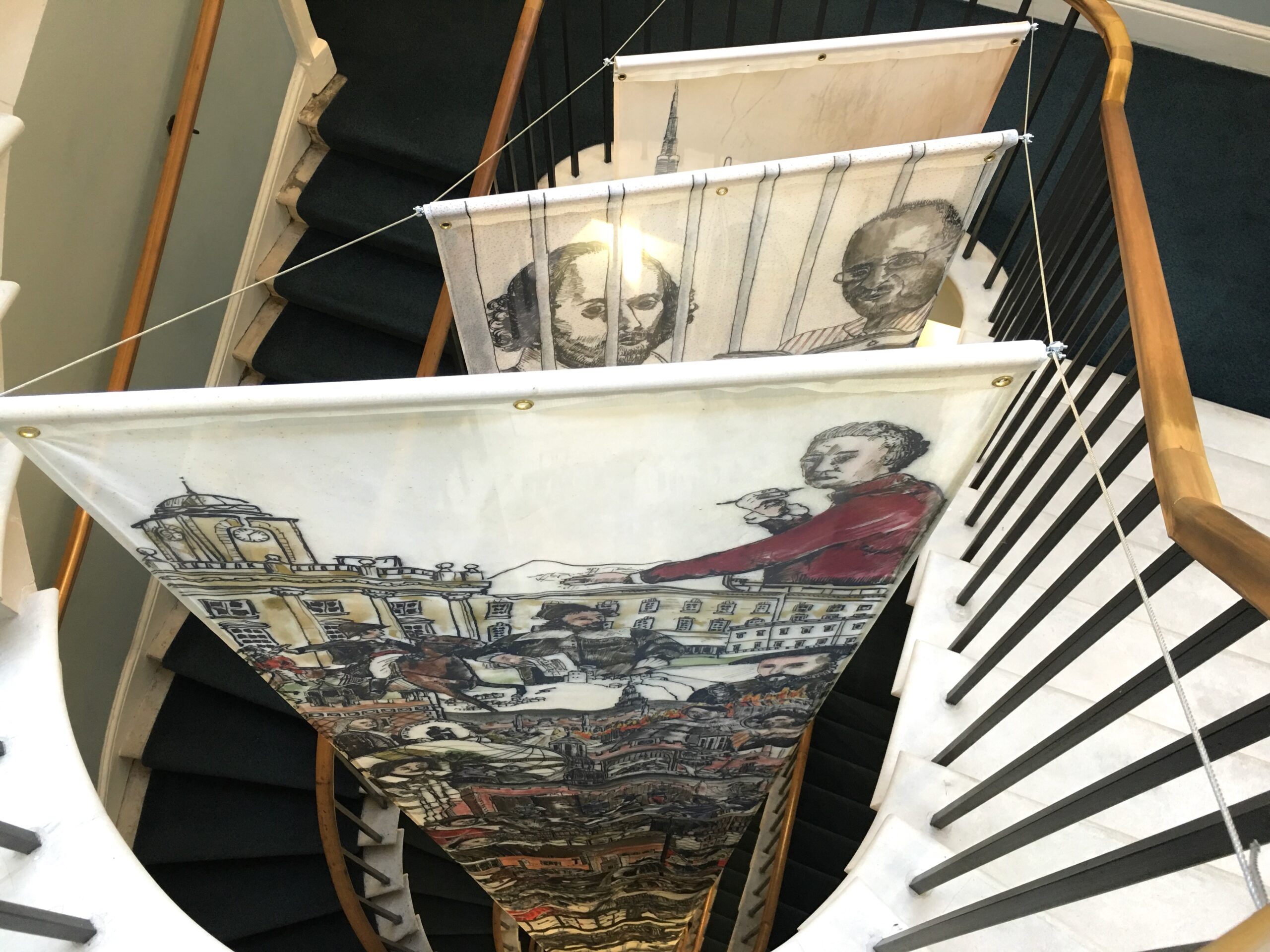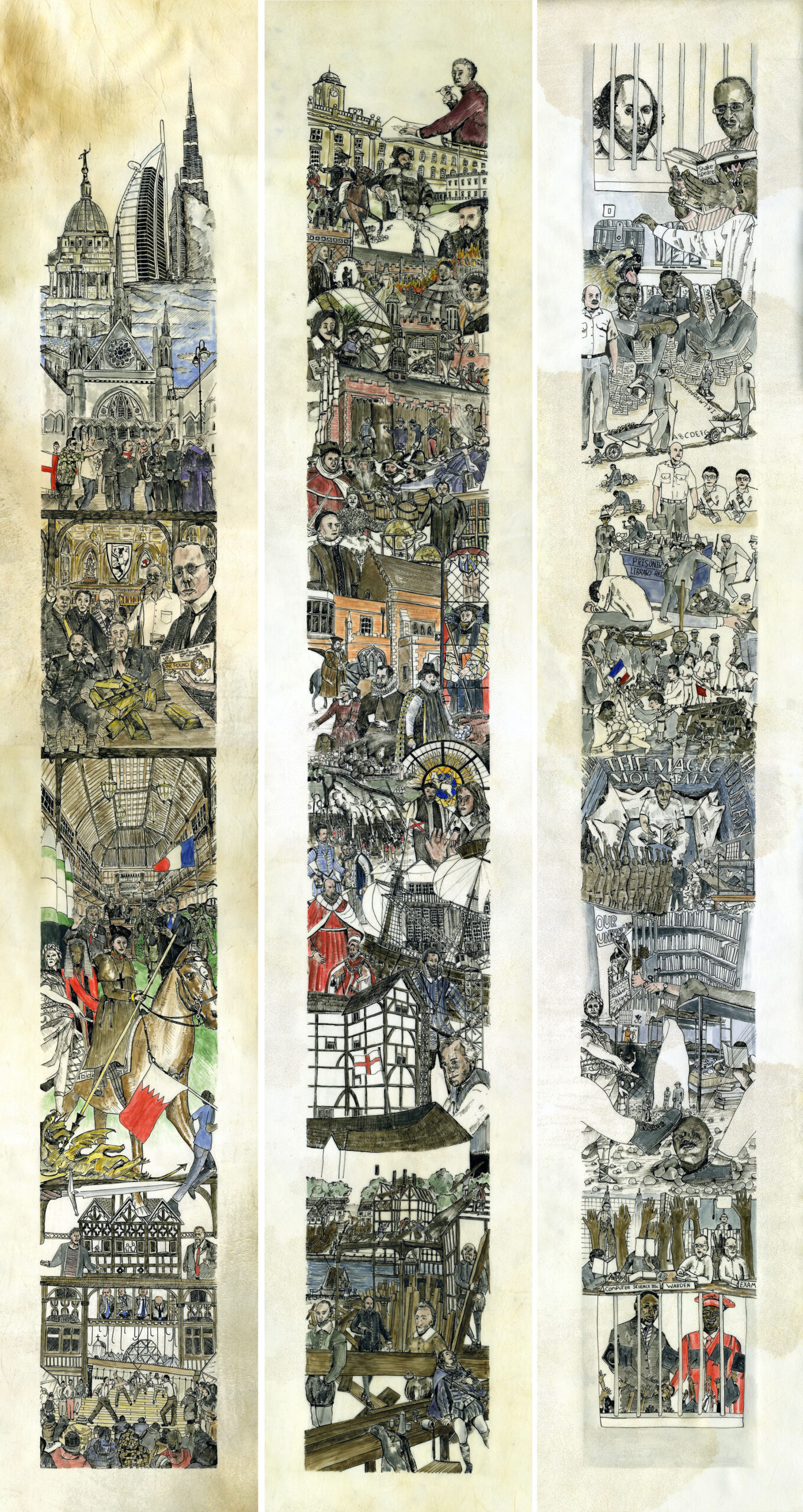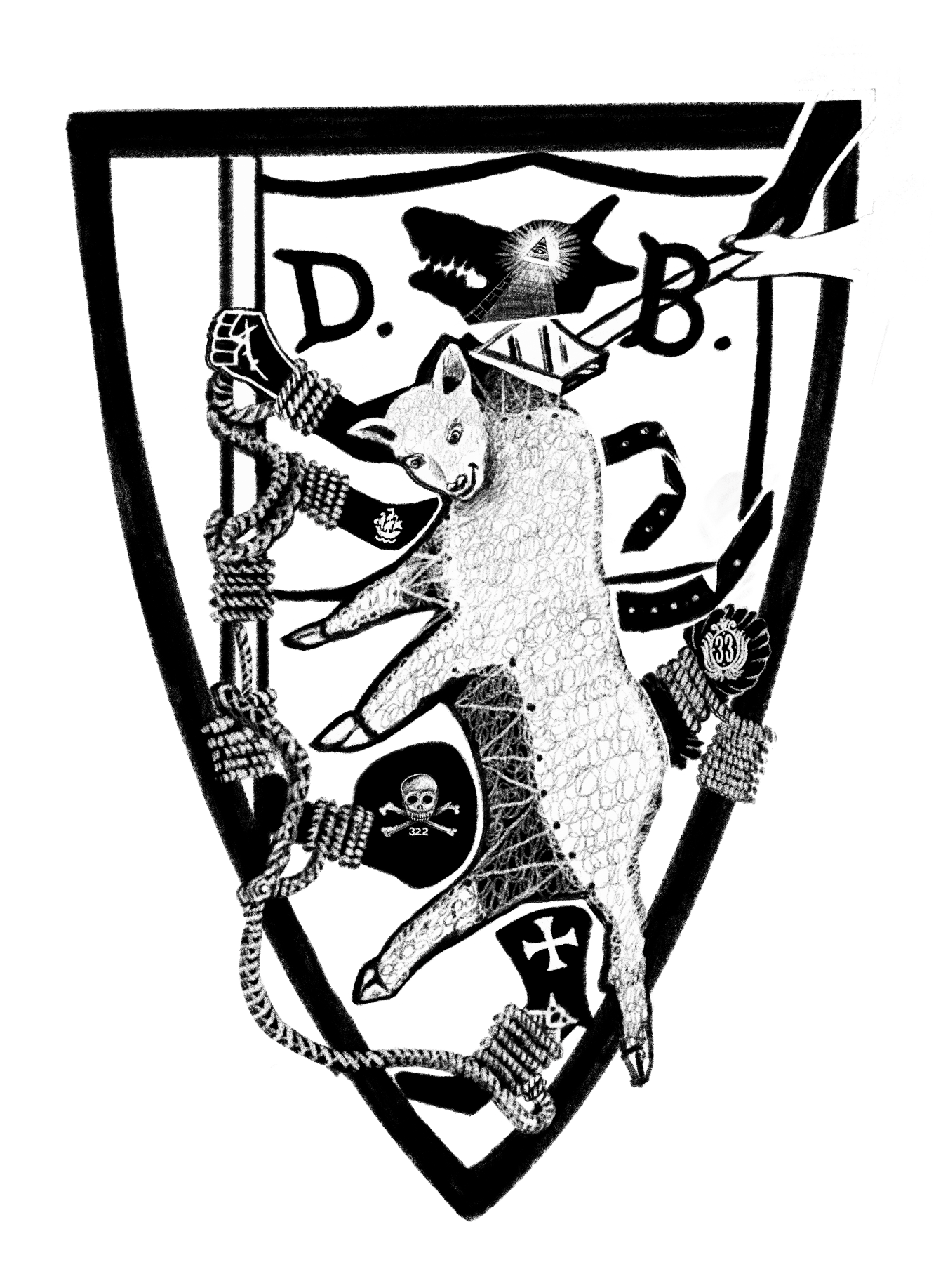“PHONETICALLY SPEAKING” To reflect the fast pace of world news, my blog is probably best served as a stream-of-consciousness text. Fast and unadulterated. With this approach, and on first encounter, text might not seem to scan. This is because I am dyslexic. Instead of keeping the proof-readers busy, I would rather let my blog updates of my visual work stand as a record of my experience of dyslexia, which I am keen that you now get to enjoy too. Unlike some news outlets, I hereby excuse myself the need for a ‘corrections’ section! The excitement of a new language is something I’m quite familiar with, and it is with this ‘joie de vivre’ that I am delighted to guide you through my thought and work processes, more phonetically (than fanatically) speaking.
Shakespeare’s Four Inns of Court For pity is the virtue of the law

For pity is the virtue of the law that coincided with King’s
This can be seen in a work David contributed for the School’s recent project, For pity is the virtue of the law that coincided with King’s exhibition By me William Shakespeare: a life in writing presented in the Inigo Rooms. David designed and created three banners that were hung in the stairwell of the law school, outside the exhibition space.
Working with one of the School’s academics, Professor Lorenzo Zucca, David chose three topics to work on for each banner: allusions to Shakespeare’s work in English legal and political life, a copy of Shakespeare’s Complete Works that was passed around Robben Island and a view of legal London related to Shakespeare’s life and times. Professor Zucca teaches a module on the legal aspects of Shakespeare’s work and this project was designed in support of his research.
The first banner in the series, focusing on English legal and political life, draws on ten of Shakespeare’s plays, weaving references into current affairs from the crisis in Syria to the rise of the far right in the UK. For example, the banner begins with a reference to a version of Hamlet that was staged at a refugee camp in Calais earlier this year. David focuses on the famous play-within-a-play scene, showing certain key political figures looking over the performance with ambivalence. The banner then displays similar allusions taking place in different locations such as outside the Royal Courts of Justice and the Houses of Parliament, where the spectacle of theatre, the law and current affairs take place on grander stages.
The second banner in the series presents a view of legal London while bringing together the formation of the Globe Theatre and the history of Somerset House. It depicts the Inner Temple, Middle Temple, Grey’s Inn and Lincoln’s Inn, while also presenting famous events and figures related to these institutions. These include people associated with the Inns, such as Sir Thomas More and Sir Walter Raleigh to Inigo Jones and William Chambers, two of Somerset House’s most well know architects.
David also chose to explore the Robben Island Bible, a copy of Shakespeare’s plays that was shared among the inmates of the notorious South African prison. Upon the end of Apartheid, each former inmate was asked to sign their names next to their favourite passages and the book is now exhibited all over the world. The third banner focuses on the history of Robben Island, once again drawing on Shakespeare’s prefiguring of ideas that would help shape legal and literary history.
The original design sketches of the banners were exhibited in on Floor -2 of The Dickon Poon School of Law in Somerset House’s East Wing. These have been loaned to the School by David to coincide with the presentation of his other pieces that are on display throughout the building. These particular works were drawn on vellum, a parchment that was prevalent in Shakespeare’s time and which is still used in the government’s drafting of bills.








